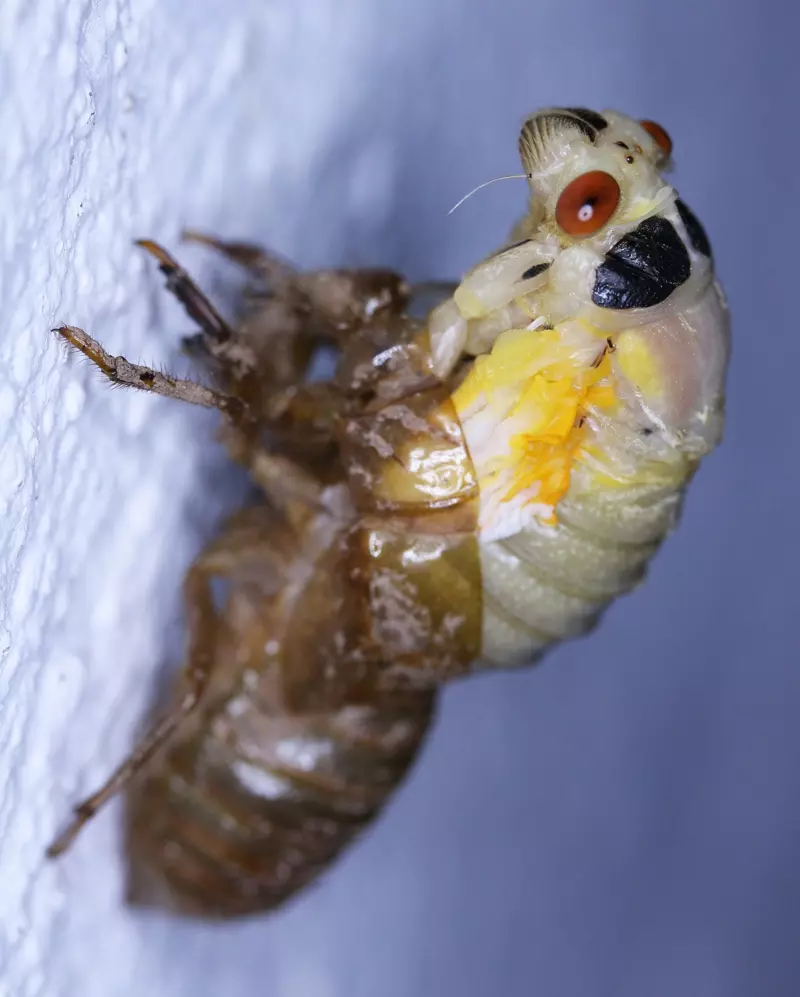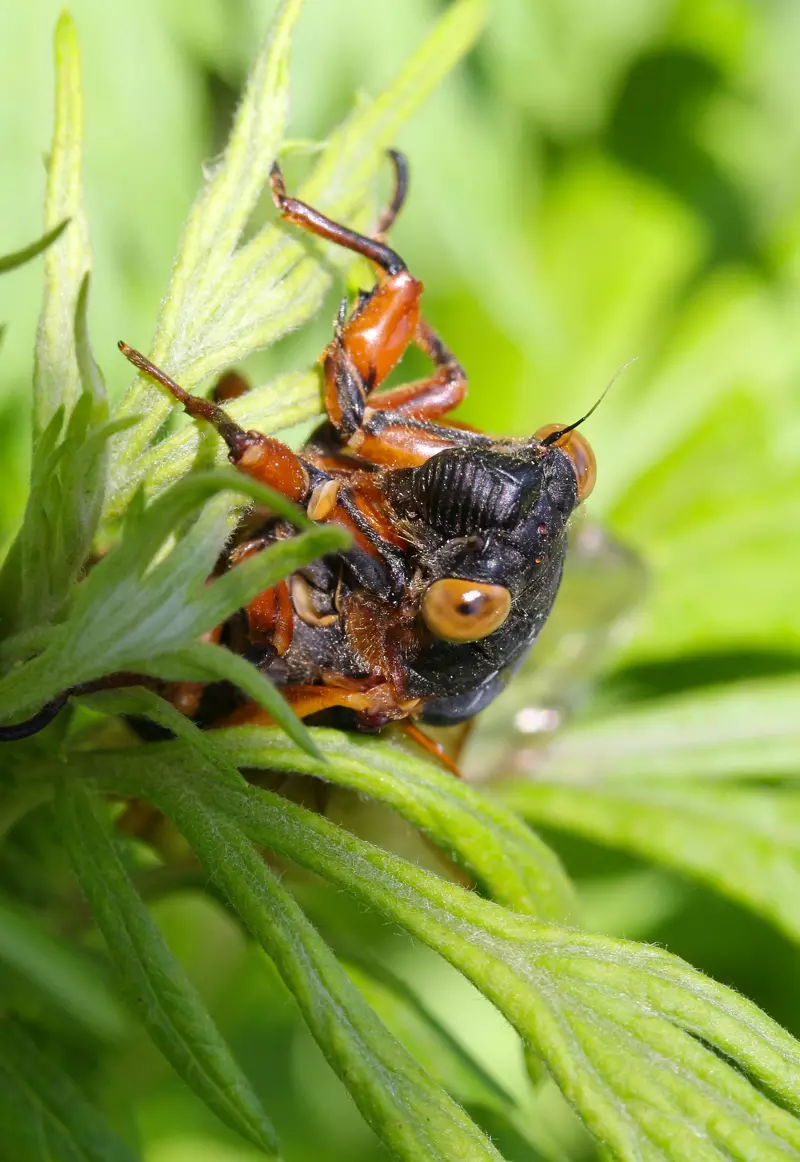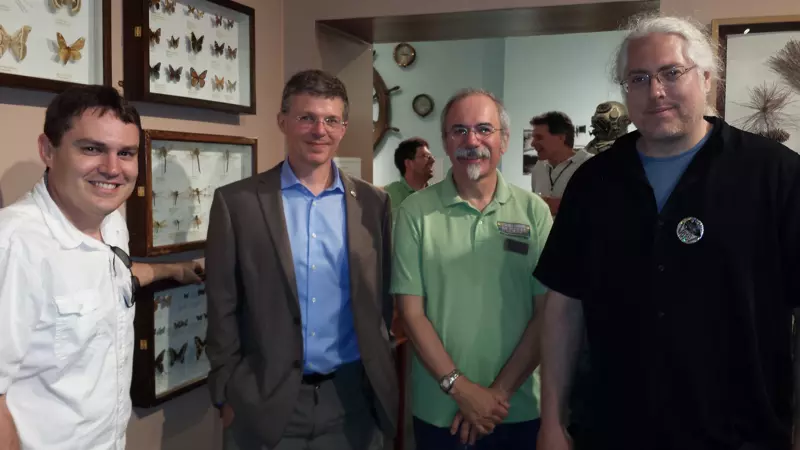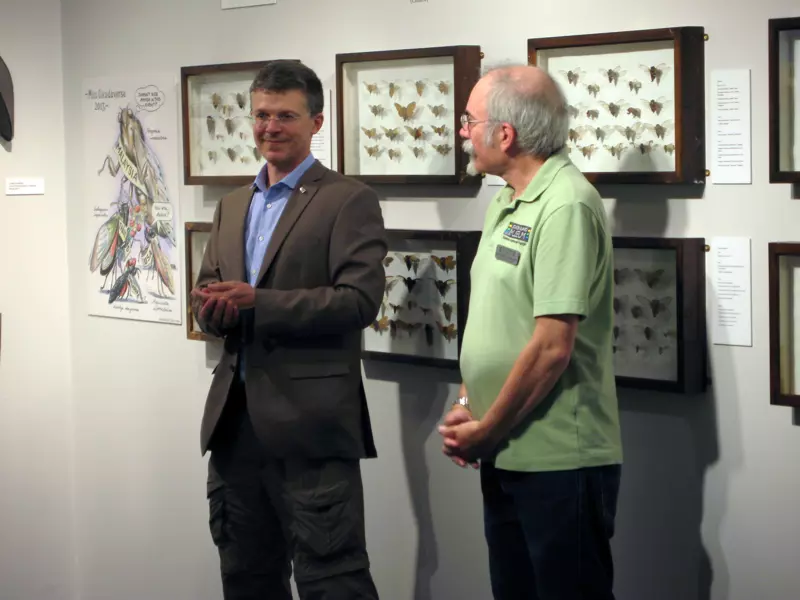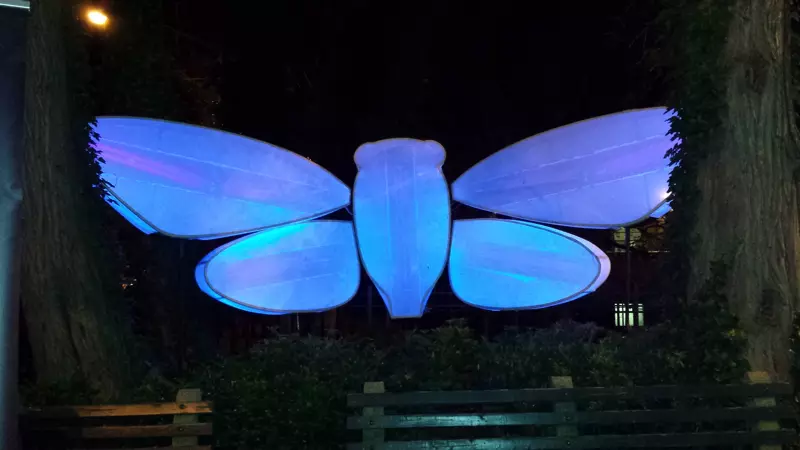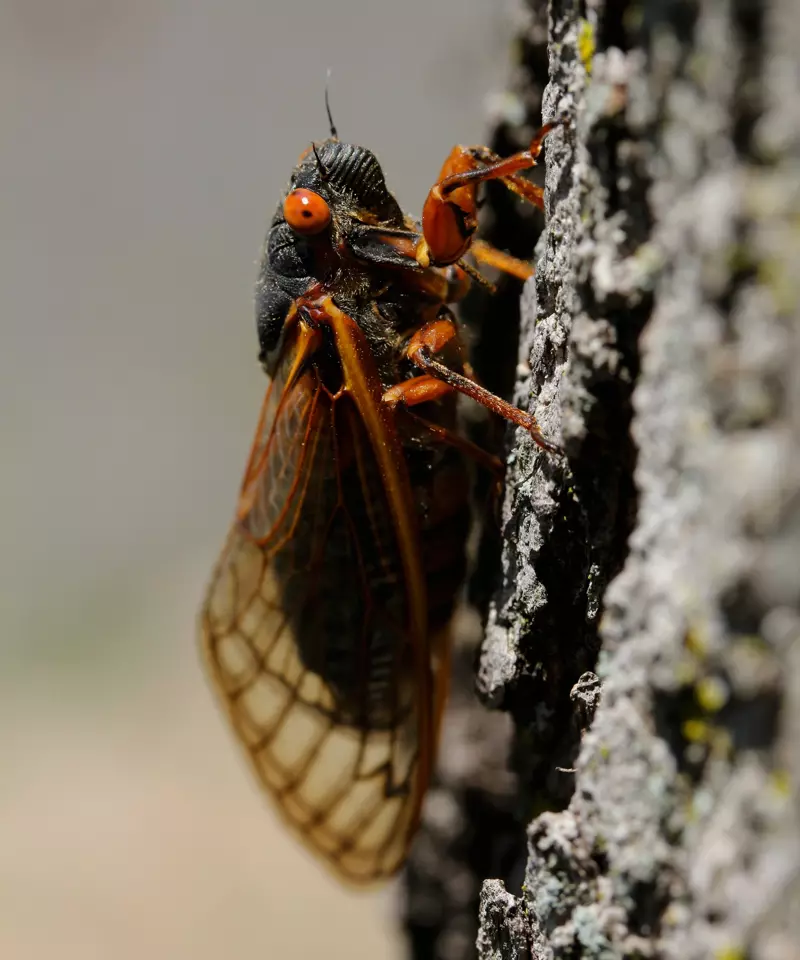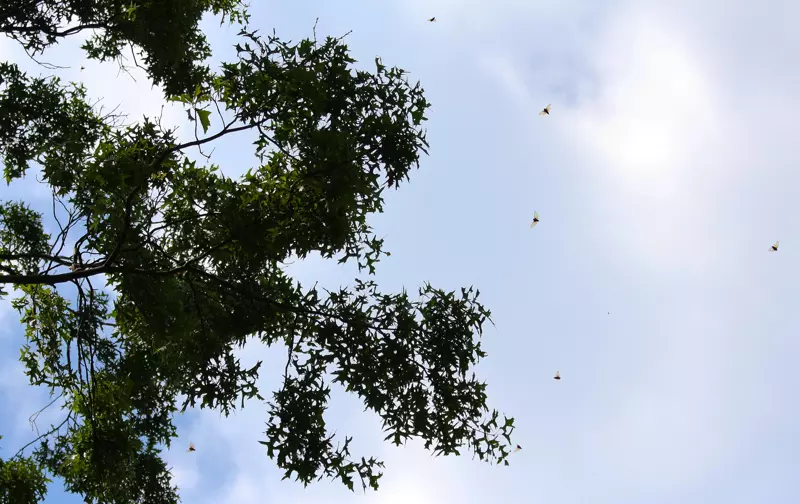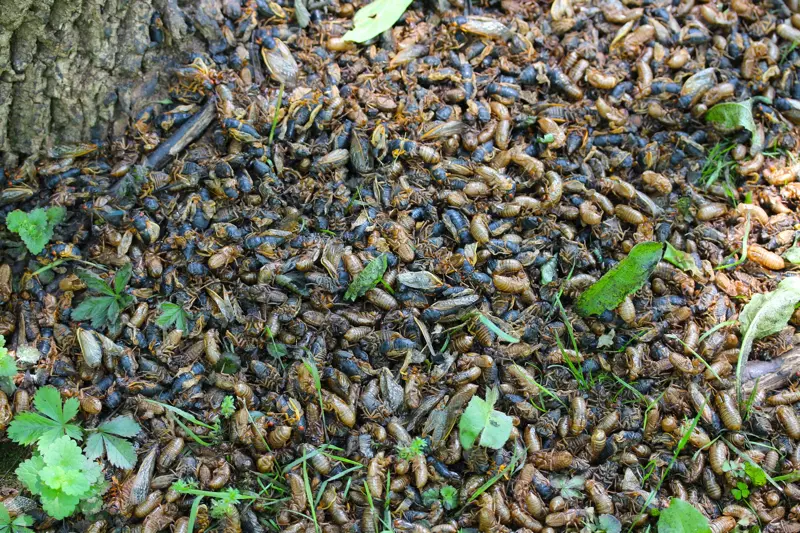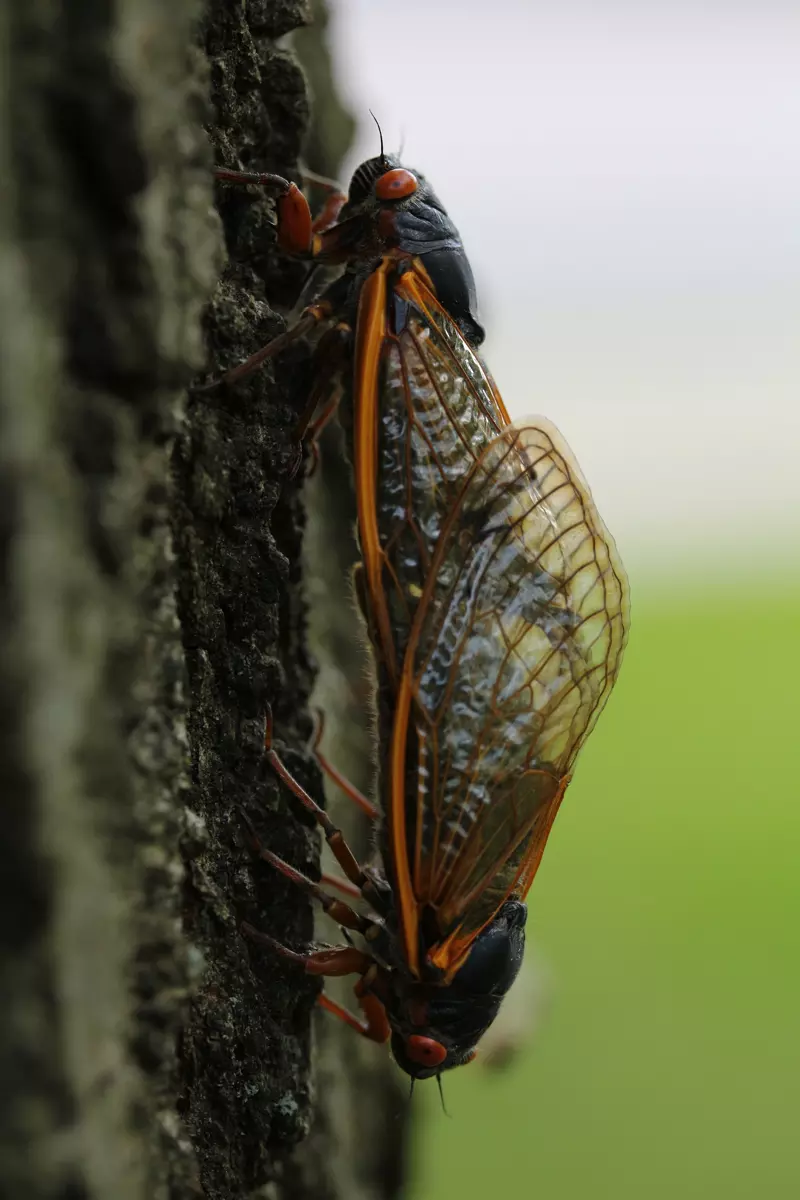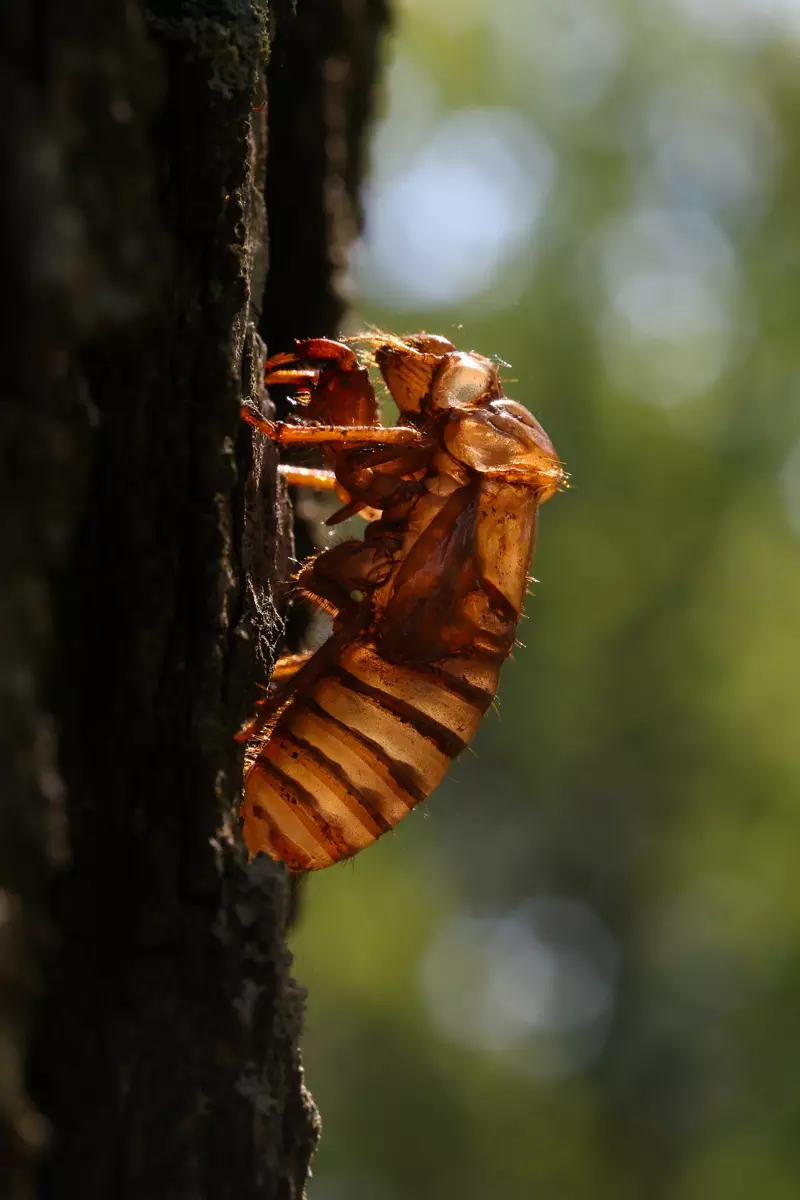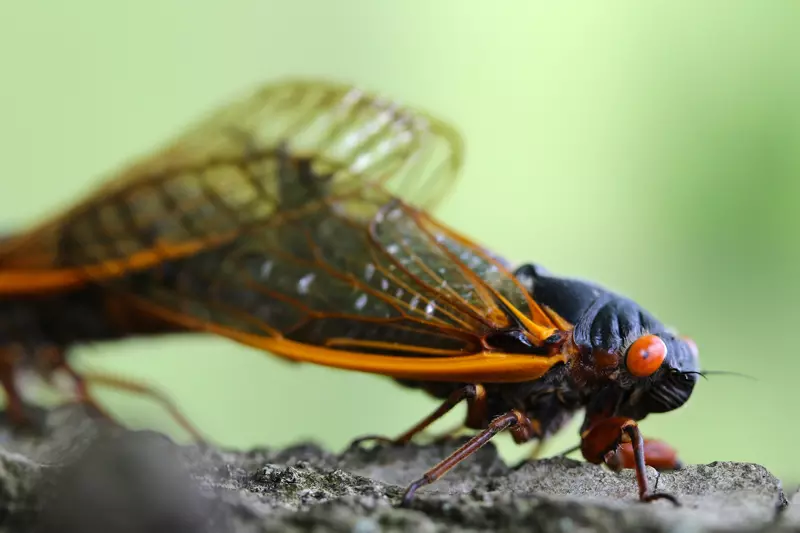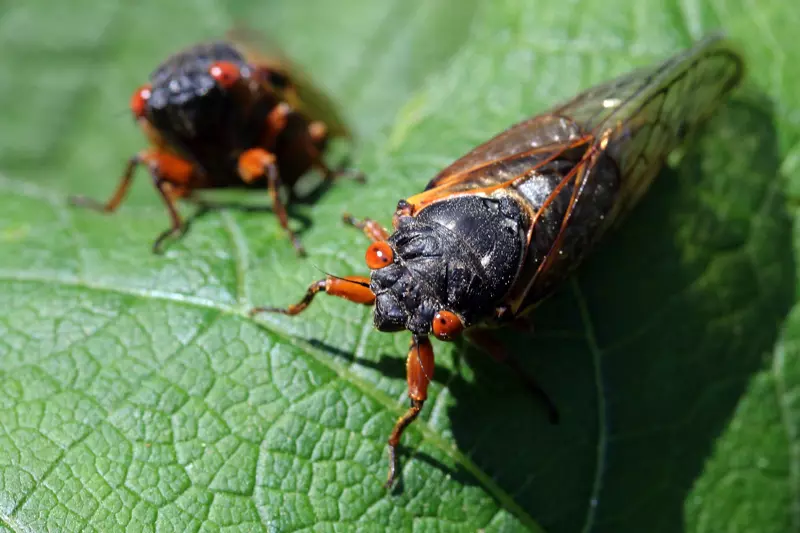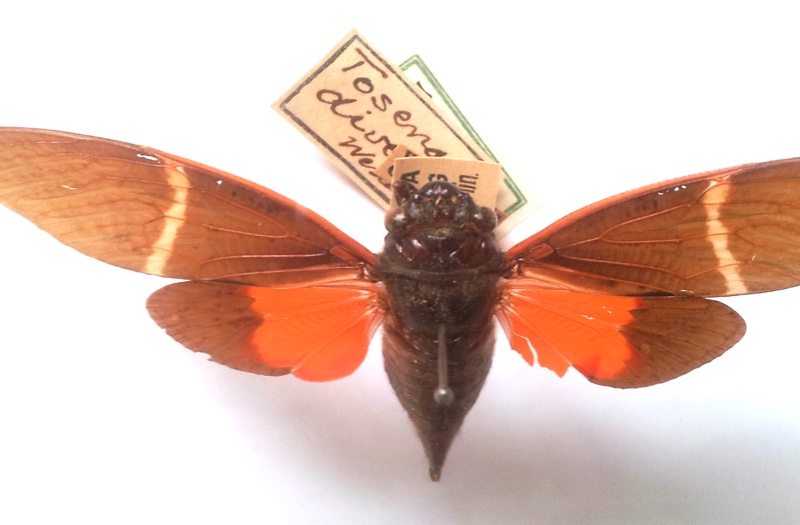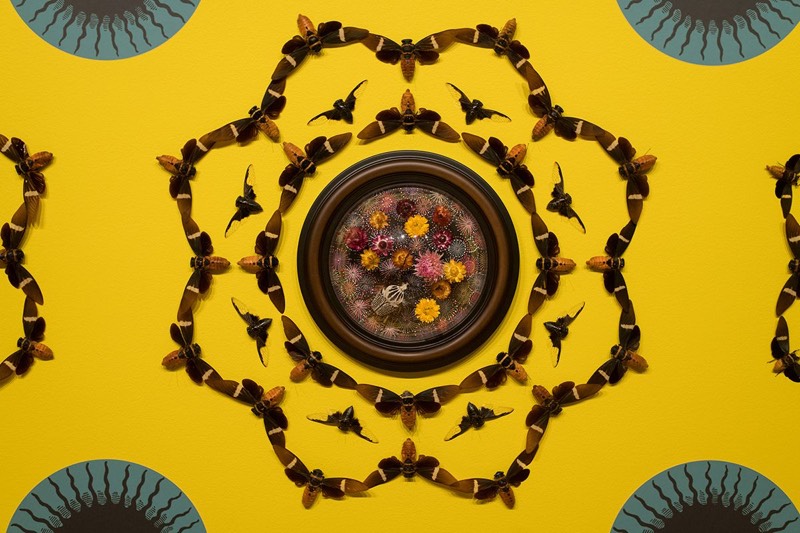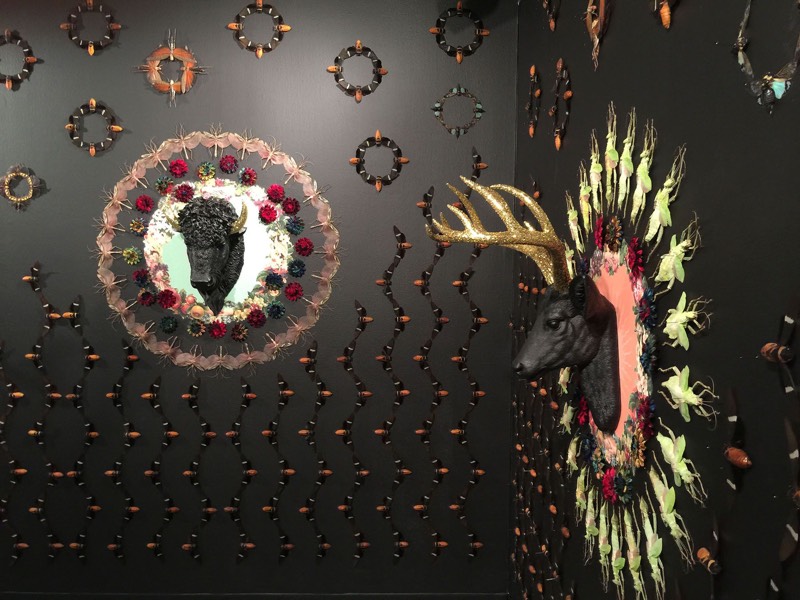Here’s the press release.
For Immediate Release
Jennifer Angus: Magicicada
New exhibition of insect-based art opens July 16 at the Staten Island Museum
(Staten Island, NY — June 29, 2021) As Brood X wanes, cicadas emerge anew at the Staten Island Museum with Jennifer Angus: Magicicada, a new exhibition opening Friday, July 16 2021 and running through May 22, 2022.
Magicicada is an immersive exhibit featuring exquisite ornamental patterns and imaginative vignettes created by artist Jennifer Angus using hundreds of preserved insects. Taking inspiration from the Museum’s collection of cicadas- one of the world’s largest- the installation will feature over two dozen species of cicada, including Brood X periodical cicadas, or Magicicadas, collected during the 2021 emergence.
“Cicadas, and Magicicada in particular, have a deep connection and meaning to the Staten Island Museum. Founder William T. Davis was the cicada expert during his lifetime and was even the one who coined the name Magicicada, capturing the wonder of the periodical cicadas’ mass emergences and long disappearances. It is especially poignant that this exhibit is opening as we are also remerging into the world after a time of darkness. I am hopeful that it can bring people a sense of joy and wonder after a time of profound loss.” Colleen Evans, Staten Island Museum Director of Natural Science.
Using responsibly collected and preserved specimens, Angus creates site-specific installations with hundreds of insects pinned directly to walls, creating patterns reminiscent of textiles or wallpaper. Up close, the installations reveal themselves to be comprised of actual insects, often species that are not traditionally considered beautiful. Angus’s installations also include Victorian-style insect dioramas in antique furniture and bell jars. Her work motivates viewers to find beauty in unexpected places and to understand the importance of insects and other creatures to our world.
In preparation for this exhibit, Angus spent time in the Museum’s extensive natural history collections to help shape the finished show. Select objects and specimens from the natural science collection, including retired collection storage and historic taxidermy, will be featured throughout the gallery amidst Angus’s fanciful arthropod arrangements. During the spring Brood X emergence, she traveled to Princeton, NJ along with the Museum’s Director of Natural Science, Colleen Evans, and Joseph Yoon from Brooklyn Bugs to observe and collect cicadas for the show.
Artist Jennifer Angus states: “I often say that the meat and potatoes of my installations are cicadas. They come big and small. Tropical species often can have colourful wings causing many people to assume they are moths, but unlike those insects, cicadas are tough, hardy creatures standing up to repeated use in my art installations. I could not have been more delighted when the SIM contacted me, and I learned of founder William T. Davis’ passion for cicadas which were an under documented species in his day. I have had the privilege of exploring the SIM’s collection, the one of the largest of cicadas in the world, and have been inspired by these mysterious creatures who spend most of their lives underground but upon emerging let us all know of their presence with loud calls. That Brood X periodical cicadas have emerged this year as well is a joyous event and has brought considerable notice to cicadas. I deeply appreciate the assistance provided by the SIM’s staff in working with me to celebrate the cicada.”
Magicicada is supported in part by an award from the National Endowment for the Arts.
Staten Island Museum is supported in part by public funds provided through the NYC Department of Cultural Affairs and by the New York State Council on the Arts.
Exhibition Related Programing
Brood X Sounding Off: Saturday, July 17, 2 pm — 3 pm
Cicada Talk with Colleen Evans, Director of Natural Science
Virtual Artist Talk: Sunday, September 19, 3 pm-4 pm
Registration Required
Staten Island Museum is located on the grounds of Snug Harbor Cultural Center, 1000 Richmond Terrace, Building A, Staten Island, NY 10301.
About the Artist:
Jennifer Angus is a professor in the Design Studies department at the University of Wisconsin-Madison, where she teaches in the Textile and Apparel Design Program. She received her Bachelor of Fine Arts at the Nova Scotia College of Art and Design and her Master of Fine Arts at the School of the Art Institute of Chicago. Jennifer has exhibited work throughout the world and at galleries such as the Smithsonian’s Renwick Gallery in Washington D.C. and the Mattress Factory in Pittsburgh, PA.
